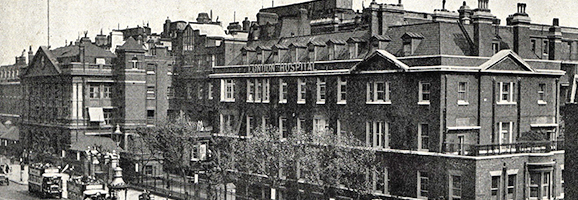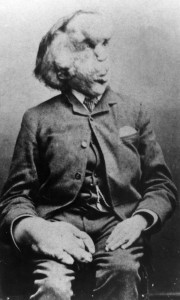
The London Hospital in the East End was originally founded in September 1740 and went by the name of The London Infirmary. It changed its name to The London Hospital in 1748 and on its 250th anniversary in 1990 changed its name once more, this time becoming the The Royal London Hospital. The first patients were treated at a house in Featherstone Street, Moorfields in November 1740 but by spring 1741, the hospital moved to Prescot Street, and remained there until 1757. It then moved to its current location on the south side of Whitechapel Road, Whitechapel, in the London Borough of Tower Hamlets, almost directly opposite Whitechapel Tube Station.

Joseph Merrick – The ‘Elephant Man’
One of the hospital’s more famous (or perhaps more correctly, infamous) inhabitants was Joseph Merrick, known as the “Elephant Man”. He was discovered by Frederick Treves, a surgeon at the London Hospital in the late nineteenth and early twentieth century. Treves found Joseph Merrick being exhibited at a sideshow along the Whitechapel Road and brought him back to the hospital to live. Merrick spent the last few years of life at The Royal London Hospital and his mounted skeleton is currently housed at the Medical School, but is not on public display. However, there is a model of a church in the hospital that was built by Joseph Merrick while living there.
The Royal London has a medical museum which is located in the crypt of a 19th-century church. It reopened in 2002 after extensive refurbishment and is open to the public free of charge. The museum covers the history of the hospital since its foundation in 1740. There is a fascinating forensic medicine section which contains original material on Jack the Ripper, Dr Crippen and the Christie murders. There are also displays on Joseph Merrick (the ‘Elephant Man’) and former Hospital nurse Edith Cavell.
In 2013, a new hospital complex opened nearby and the old part of the building was purchased by Tower Hamlets Council for £9M. Their intention is to turn the Grade II listed building into a ‘civic hub’ including a cafe, libraries, housing advice offices and meeting rooms for the council.
